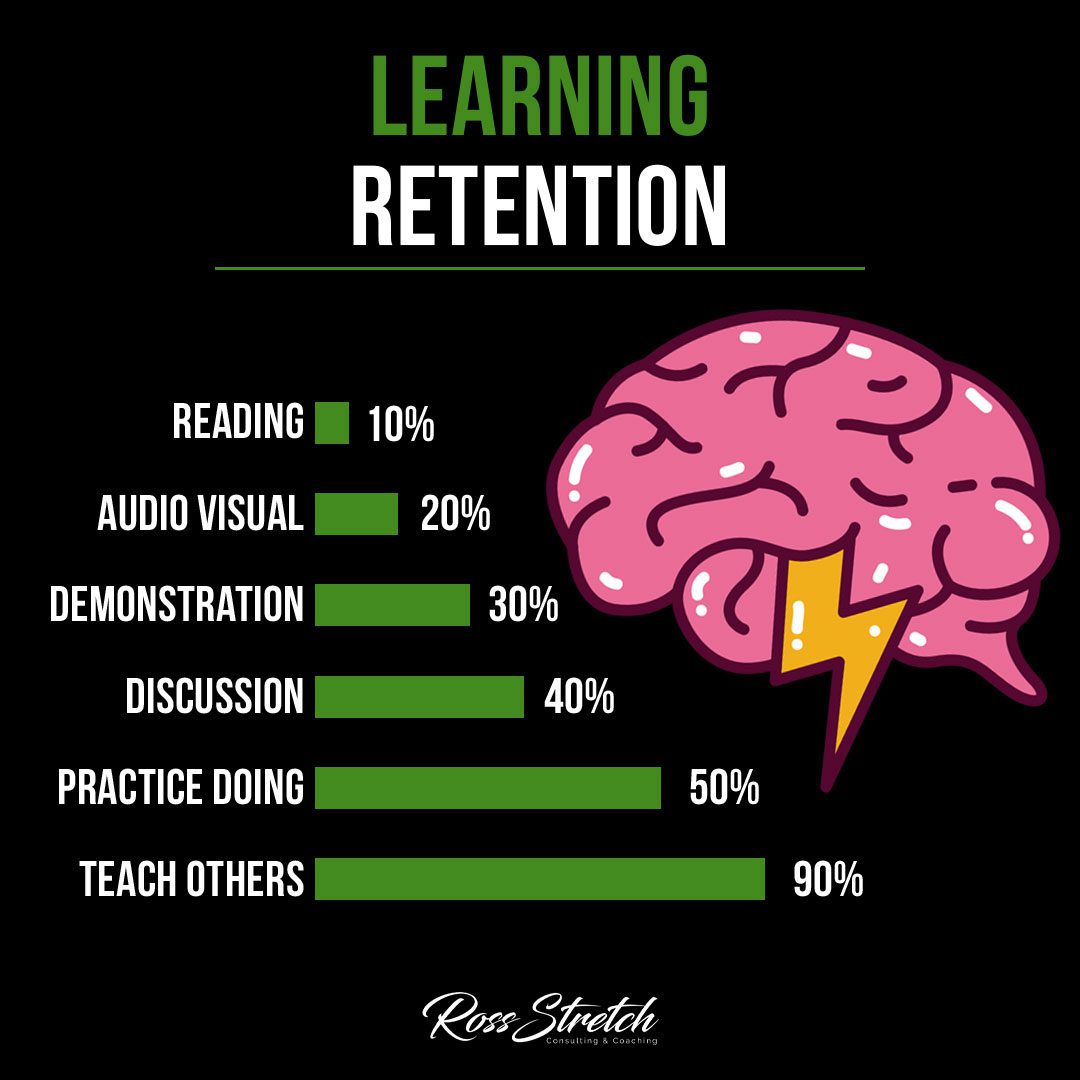Learning is a lifelong journey, and the ability to retain what we learn plays a critical role in personal and professional development. Understanding the different levels of learning retention is essential in choosing the right methods to maximize memory and application of knowledge.
The Foundation: Reading for Retention
Reading has long been established as a fundamental method of learning. While it has a retention rate of only 10%, it remains a crucial first step in the learning process.
Strategies to Improve Reading Retention
- Active Reading: Engage with the text through note-taking, highlighting, and summarizing.
- Spacing: Distribute reading sessions over time for better memory encoding.
The Audio-Visual Connection
Audio-visual materials boost retention to 20%, making lectures, videos, and webinars effective learning tools.
Leveraging Multimedia Learning
- Supplement Reading: Use videos to reinforce concepts you’ve read about.
- Engage Senses: Combine auditory and visual cues to enhance memory.
Demonstration: Seeing Is Remembering
Seeing a task being performed increases retention to 30%. This approach is particularly useful in skill-based learning.
Benefits of Demonstrative Learning
- Imitation: Replicate the actions you observe to solidify learning.
- Visual Cues: Use the power of visual memory to remember steps and procedures.
The Power of Discussion
Engaging in discussions can lead to a 40% retention rate. Conversations force you to process and articulate your thoughts, reinforcing learning.
Encouraging Intellectual Discourse
- Study Groups: Exchange ideas and challenge each other’s understanding.
- Debates: Defend your knowledge on a topic to better cement it in memory.
Practice Doing: The Halfway Mark to Mastery
Hands-on practice has a 50% retention rate. By actually doing what you’ve learned, you’re more likely to remember it.
Making Practice Effective
- Consistent Practice: Regularly scheduled practice sessions lead to better retention.
- Real-world Application: Apply what you’ve learned in practical, real-life situations.
Teach to Learn: The Pinnacle of Retention
Teaching others boasts a 90% retention rate. When you teach, you not only recall what you’ve learned but also adapt it to help others understand.
Transforming Knowledge into Teaching
- Peer Teaching: Explain concepts to peers to understand and remember better.
- Create Tutorials: Make guides or videos explaining what you’ve learned to others.
Conclusion: A Multi-Faceted Approach to Learning
To truly master new information, one must employ a variety of learning and retention strategies. By starting with reading and progressing to teaching, you can significantly enhance your retention rates and deepen your understanding of complex concepts.


